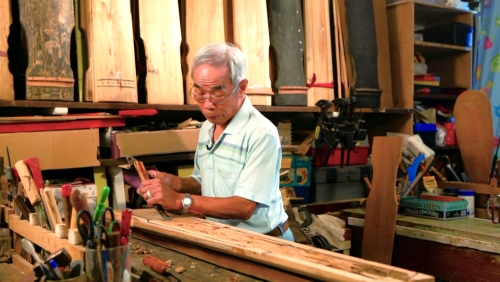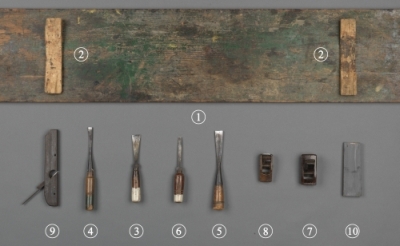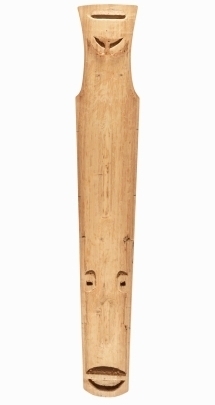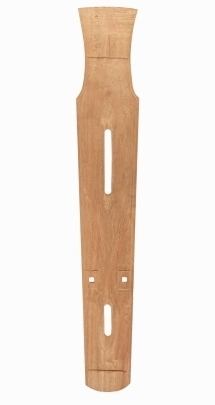-
History & Society
- Education in Pre-war Hong Kong
- History of Taikoo Sugar Refinery
- Hong Kong Products Exhibition
- Local Festivals Around the Year
- Post-war Industries
- Pre-war Industry
- The Hong Kong Jockey Club Archives
- Tin Hau Festival
- Memories We Share: Hong Kong in the 1960s and 1970s
- History in Miniature: The 150th Anniversary of Stamp Issuance in Hong Kong
- A Partnership with the People: KAAA and Post-war Agricultural Hong Kong
- The Oral Legacies (I) - Intangible Cultural Heritage of Hong Kong
- Hong Kong Currency
- Hong Kong, Benevolent City: Tung Wah and the Growth of Chinese Communities
- The Oral Legacies Series II: the Representative List of the Intangible Cultural Heritage of Hong Kong
- Braving the Storm: Hong Kong under Japanese Occupation
- A Century of Fashion: Hong Kong Cheongsam Story
Geography & EnvironmentArt & Culture- Calendar Posters of Kwan Wai-nung
- Festival of Hong Kong
- Ho Sau: Poetic Photography of Daily Life
- Hong Kong Cemetery
- Sketches by Kong Kai-ming
- The Culture of Bamboo Scaffolding
- The Legend of Silk and Wood: A Hong Kong Qin Story
- Journeys of Leung Ping Kwan
- From Soya Bean Milk To Pu'er Tea
- Applauding Hong Kong Pop Legend: Roman Tam
- 他 FASHION 傳奇 EDDIE LAU 她 IMAGE 百變 劉培基
- A Eulogy of Hong Kong Landscape in Painting: The Art of Huang Bore
- Imprint of the Heart: Artistic Journey of Huang Xinbo
- Porcelain and Painting
- A Voice for the Ages, a Master of his Art – A Tribute to Lam Kar Sing
- Memories of Renowned Lyricist: Richard Lam Chun Keung's Manuscripts
- Seal Carving in Lingnan
- Literary Giant - Jin Yong and Louis Cha
-
History & SocietyGeography & EnvironmentArt & Culture
-
View Oral History RecordsFeatured StoriesAbout Hong Kong Voices
-
Hong Kong MemoryThe Legend of Silk and Wood: A Hong Kong Qin StoryRecently Visited
Hollowing
-
Step 3: Hollowing
Inside the top board is the cavity belly, which forms the qin’s resonance box when assembled with the bottom board at the base. The cavity belly needs to be thick in the head and thin in the tail, with a slightly thicker middle axis. The sides should appear curved at the edges, and these should be thinner than the middle. The cavity belly requires different chisels to hollow it out. It is next smoothened with a round plane and a flat plane for conditioning, so that the cavity belly can become rounded and smooth while maintaining the parts of the sound absorbers (nayin) and the feet pools (zhuchi). The thickness and the curvature of the cavity belly affect the qin’s resonance and timbre. When refining and hollowing out the cavity belly, the bottom board has to be fitted over the cavity belly from time to time so that the maker can knock at different parts of the qin body to check the sound’s firmness. The inner side of the bottom board also requires refining to improve its curvature.
-
Step 3: Hollowing
Tools
- Work board – must be created from flat and sturdy wood
- Curved wood supports – to stabilise and support the curved top board for refining and hollowing out the cavity belly
- Big square chisel
- Small square chisel – for refining and hollowing the cavity belly. The work usually begins from the middle axis using the larger square chisels, followed by refining with the small square chisels.
- Big round chisel
- Small round chisel – the round chisels are used for creating a curvature towards the edge on the two sides of the cavity belly for a more rounded and fuller timbre
- Small round plane
- Small flat plane – the hollowed cavity belly is smoothened by the small round and flat planes
- Edge plane – for conditioning the edge of the cavity belly
- Sharpening stone – good work requires sharp tools. Chisels and planes need to be sharpened frequently. The finer the sharpening stone is, the sharper the blades are. Sharpening a blade is a “must-know” part of the qin making course.
-
Step 3: Hollowing
A top board (left) and a bottom board (right) together form a refined and hollowed cavity belly
Maker: Chuen-mei, Choi Chang-sau’s daughter ( apprenticeship began in 2006)
Maker’s Note: I have watched my father act on his passion for qin making since I was little. I think that is why I became interested in the craft in the first place. I began to create my first qin in 2006. The process is not easy at all, but I have gained lots of satisfaction from it.
Copyright © 2012 Hong Kong Memory. All rights reserved. -









